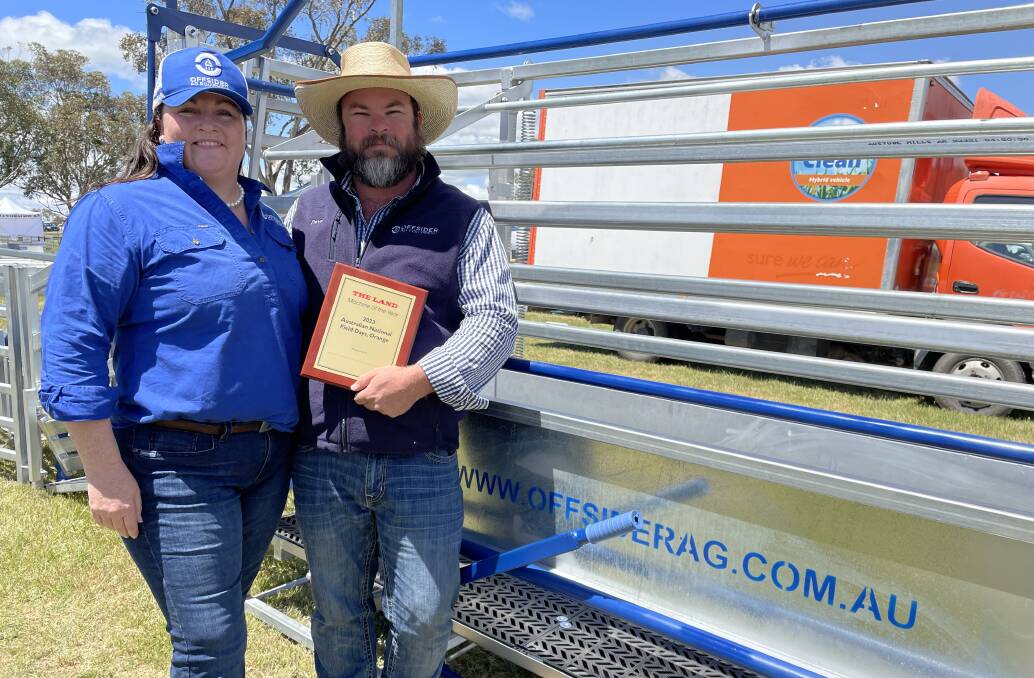
Safety and efficiency were at the heart of this year's winner of The Land Machine of the Year at the Australian National Field Days, held at Borenore near Orange.
It wasn't the first win for company, Offsider Ag, Killarney, Qld, having received the same award in 2019 for its Spin-a-Calf calf handler.
However, this year's winning entry, the Offsider Ag Small Ruminant Bulk Handler, ticked the boxes on labour, efficiency, safety, and for goats, was also eligible for the NSW Sheep and Goat Rebate Scheme for goat handlers.
The rebate includes up to $11,500, or 50 per cent of the total cost, for goat handlers, said NSW Department of Primary Industries sheep and goat traceability director Kiowa Fenner, Orange, who was at the field days to speak with producers about the program.
This made a $17,500 (+GST) handler, such as the Small Ruminant Bulk Handler, an attractive option for producers.
The handler, also designed for use with sheep, made activities such as drenching, tagging, foot pairing and lamb marking easier.
David Hicks, who runs Offsider Ag with Andrea Brosnan, said the handler removed the need for the operator to enter the race, while also removing the need to catch and lift lambs or kids for marking.
He said its "v" design immobilised the stock while being handled, limiting their movement to the amount of strength in their neck, rather than their whole body.
The sheep, or goats, walked in with their feet on the floor of the handler and then by lowering the floor, the v-side race took the weight of their body.
Mr Hicks said their shoulders and rib cage took the weight, which prevented them from jumping or dropping their head.
By keeping the stock in a single file, as well as immobilising them, it also prevented the risk of crushing.
The unit fitted as many as 12 mature ewes or nannies, depending on their size, and created an easy flow of stock when emptied and refilled.
"So you might pick a cycle that works for you. You might aim to fill it with 10 every time and if you get a dozen, they'll fit," he said.
When lamb or kid marking, the males just needed flipping over for castrating and otherwise all stock were handled as they were, he said.
Another benefit was the system's simplicity, with no power required. Just balanced levers.
"There's no hydraulic power pack, there's no air system running, it's all mechanical," Mr Hicks said.
"So when we go to let them out, we raise our floor to what we call a drop height. We'll open our exit gate, which all happens from the one entrance (at the rear of the handler) and then drop the v."
The v opens out to parrallel sides, the floor simultaneously comes up to meet the animals' feet, and out they walk.
"And because of the way you lift the floor up and down, you're therefore not having to lift the weight of the sheep," he said.
The handler was made with as much Australian materials as possible, he said, including steel and paint.
The win at ANFD was significant for the company, which has only been in business for six years. However, there was a family history in agricultural engineering and manufacturing, so the couple have had some good advice along the way.
This included progressing from items such as stock grids before expanding into the realm of livestock handling.


